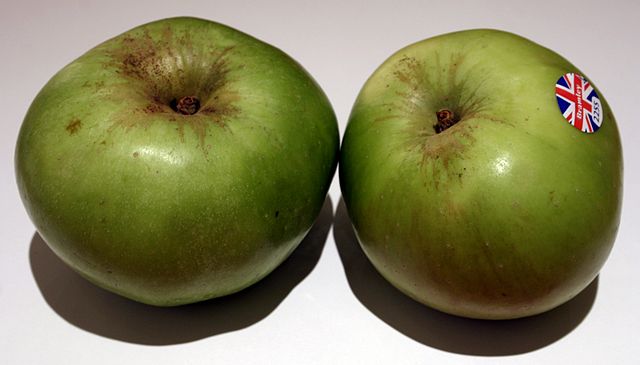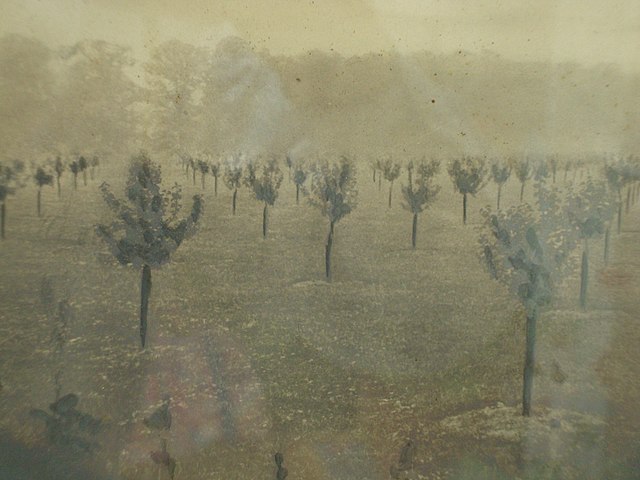The Story of the Bramley Apple
- Posted in:
- Heritage
- NewsletterArchive
This inspiring article comes from our Winter 2009/2010 Newsletter:
The Bramley Apple story begins around 1809 with Mary Ann Brailsford, a young Southwellian who took some pips from the apples her mother was preparing and planted them in a flowerpot. As one of the pips was doing so well, it was later transferred to the young girl’s garden where it began to thrive. It is this tree that first began to bare a unique apple, one that has become the most respected apples in the world. Sadly, however, Mary left the family house and her apple seedling, and later died, without knowing how influential her seedling would become in the future.

Above: Bramley Apples (By Marcin Floryan - Self-photographed, CC BY-SA 2.5)
The apple that has become one of Southwell’s most celebrated assets may have gone unnoticed if it had not been for a certain young Henry Merryweather who was born in Carlton-on-Trent in 1839. His father, also called Henry, had been in the employment of Reverend John Drake Becher as a gardener in Carlton-on-Trent until 1840, when the Reverend moved to take up residence at Norwood Hall in Southwell, taking his gardener with him to look after the extensive gardens which supplied the needs of the house.
Henry Jnr joined his father working in the gardens of Norwood Hall at the tender age of 10, allowing him to gain a first-class knowledge of horticulture and develop a particular interest in the may different fruits which were grown in the grounds and walled kitchen garden.
In 1854, father and son ceased working at Norwood Hall so that they could begin their own business as nurserymen. They invested in buying two acres of land (adjacent to Norwood Park) which was just sufficient for the Merryweathers to concentrate on cultivating and selling fruit, strawberries in particular.
It was purely by chance that one day, young Henry Jnr noticed some fine-looking apples that the gardener of the Vicar Choral of Southwell Minister was carrying in a basket. Upon asking the gardener where he had got the apples from, the gardener replied that they were off the tree that grew in Mr Bramley’s garden at No. 73, Easthorpe. Henry immediately went round to see Mr Bramley to ask if he could take some grafts from the apple tree, so that he might propagate it for he believed he had found a unique apple.
Mr Bramley was happy to oblige and said that Henry could take as many grafts as he wished, as long as he named the apple that they produced after him. Henry was extremely successful in cultivating the grafts and was soon producing an award-winning apple.

Above: 'Painted by John Ralph Starkey at Norwood in 1910', some Bramley seedlings planted by Mr Starkey at Norwood Hall park at the start of the 20th century (By PresstheStarKey - Own work, CC BY-SA 4.0). You can find out more about the Starkey saplings at Norwood Park and even possibly buy a Bramley sapling clone here.
Henry Merryweather first presented the ‘Bramley Seedling’ to the Royal Horticultural Society’s Fruit Committee on the 6th December 1876 where it was highly commended. On presenting the variety again in 1877, the apple received a First-Class Certificate by the Committee of the Royal Jubilee Exhibition of Apples in Manchester.
Since those early years, the Bramley Apple has received several first-class certificates and is now recognised as one of Britain’s best loved varieties. Many celebrations of the apple are hosted in Southwell to this day including the Bramley Apple Food and Drink Festival hosted by Southwell Minster in October.
